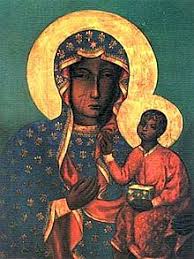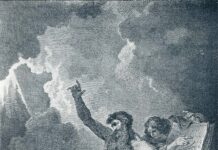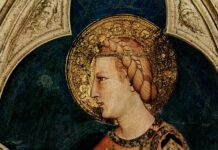Our Lady of Czestochowa, the most famous shrine in Poland, and that country’s patroness, is shrouded in mystery. Legend has it that the original was painted – perhaps ‘written’ in Easter terminology – by Saint Luke himself; that the icon was discovered by Saint Helena in 326, and given to her son, Constantine, who brought it to the Eastern capital he had founded, which he named, naturally enough for an Emperor, after himself. From there, by means we know not, it eventually ended up in Poland apparently in 1384, as it was brought on its way by the Polish Prince Ladislaus from the great city in the tumult of that century.
It was at Jasna Gora – the ‘bright field’, outside Czestochowa – that the horses mysteriously refused to move any farther. So there it was left, and there it resides to this day, in the great shrine built around the icon.
One further legend: A half-century on, in 1430, Hussite raiders stormed the shrine, attempting to carry off the image. Once again, their horses refused to move an inch, so one of the raiders slashed the image once, then twice – he tried a third time, before falling to the ground, dying in agony. The scars still remain, a sign of the suffering Our Lady has endured, with her Son, for our salvation. To this day, the shrine at Jasna Gora receives tens of thousands of pilgrims each year, and we know not how many answers to prayer, even miracles, flow from this ancient icon, the Mother of God Hodegetria, ‘showing us the Way’, to the fullness of truth and of life.










